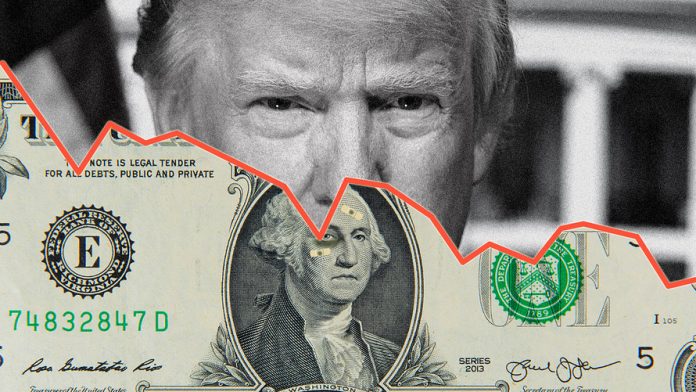
SINGAPORE: The dollar held steady on Tuesday as fresh concerns about the Sino-U.S. trade war lent support to safe-haven currencies, although moves were tempered as investors await possible cues from the Federal Reserve about policy direction.
Weighing on global risk sentiment were comments from U.S. President Donald Trump on Monday that seemed to hose down hopes of a trade truce with China.
In an interview with the Wall Street Journal, Trump said he expects to move ahead with raising tariffs on $200 billion in Chinese imports to 25 percent from 10 percent currently.
The dollar index, which measures its value against six major peers, held steady at 97.01, trading near its highest level since Nov. 15.
The greenback has advanced over the previous two sessions as investors sought the safety of the world’s most liquid currency on fears that the global economic recovery was losing steam.
Traders are also focused this week on a speech on Wednesday by Fed Chairman Jerome Powell and minutes from the central bank’s Nov. 7-8 meeting to be released on Thursday, for further cues of how many more times the Fed is likely to hike interest rates.
The Fed is widely expected to raise interest rates by 25 basis points in December but the key debate in the market now is the pace of the U.S. central bank’s monetary tightening path in 2019.
However, investors also see the dollar’s rally potentially losing steam if slowing growth prompts the Fed to halt its monetary tightening cycle sooner than expected.
The Australian dollar, often considered a barometer for global risk appetite, was slightly higher at $0.7226 but well-off Monday’s peak as rising trade tensions hit sentiment. The Aussie dollar has lost 1.5 percent of its value over the past six trading sessions.
The yen, also a safe haven currency, changed hands at 113.43, with the greenback losing 0.12 percent versus the Japanese unit on Tuesday.
But analysts expect the yen to weaken against the dollar due to the divergence between the Fed’s and the Bank of Japan’s monetary policies. While the Fed is on a monetary tightening path, the BOJ remains committed to its ultra-loose monetary policy due to low growth and inflation.
The dollar has gained 1.1 percent over the Japanese currency in the previous five trading sessions.
The euro gained marginally versus the greenback to $1.1335 in Asian trade. It briefly hit an intra-day high of $1.1383 on Monday after signs that Italy may cut its budget deficit target to satisfy the European Union.
The single currency later gave up its gains due to weaker-than-expected economic data out of the euro zone.
The British pound lost 0.2 percent to $1.2807 on Tuesday as Brexit worries weighed on the currency. Under a deal secured with European Union leaders on Sunday, Britain will leave the bloc in March with continued close trade ties. However, British Prime Minister Theresa May faces a stiff political battle getting it approved by a divided parliament.
The greenback gained 0.07 percent versus the Canadian dollar, which changed hands at C$1.3258, as oil prices slipped on Tuesday. Canada is one of the largest oil exporters in the world.






